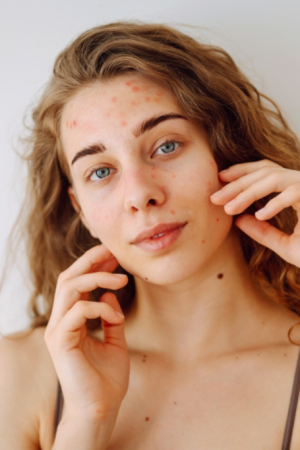This Skincare Dictionary Tells You Which Ingredients Are Good Or Bad For Your Skin
The helpful list includes more than 1,700 common ingredients
24 March 2019

All Credits: PA
Sometimes, reading the side of a bottle of moisturiser or shampoo can feel like trying to decipher a foreign language.
From acronyms like SLS and AHA to impossibly long and unpronounceable words like 4-T-butylcyclohexanol, often the ingredients list doesn’t seem to match up with the product description. Not even water is spelled normally – it’s always ‘aqua’.
So if you have a reaction to a new product and you’re trying to work out what specifically caused the adverse effect, it can be hard to pinpoint the offender.
Help is at hand, however, thanks to a tip-off from a Reddit user.
“I am probably late to this but this is honestly so great, I wanted to reshare, so people that don’t know this exists (like me) can hop on,” wrote a user who goes by the name BoobWorldOver in the Skincare Addiction forum.
“Apparently there’s a dictionary that has basically most of the ingredients used in skin care products and it lists what they do, whether or not they’re good etc.”
There is indeed. Compiled by well-respected beauty brand Paula’s Choice, the Ingredient Dictionary lists 1,796 ingredients, describes what they do and categorises them as best, good, average or poor.
Acai, for example is listed as “a potent source of antioxidants, including ferulic acid and epicatechin. According to in vitro research, açai has higher antioxidant content than cranberry, raspberry, blackberry, strawberry, or blueberry”. Therefore, it’s labelled as ‘best’.
Neroli oil, on the other hand, is ‘poor’ because its “fragrance component, which has an orange blossom scent, can be a skin sensitiser.”
The aforementioned 4-T-butylcyclohexanol falls into the good category because: “A synthetic fatty alcohol that functions as an emollient and soothing agent. It can reduce skin surface stinging on contact and also has the ability to reduce visible redness on skin.”
And in the average category we find ingredients like royal jelly. You might be surprised to learn the bee secretion isn’t all it’s cracked up to be.
“The myriad claims about royal jelly are anecdotal and have no research to substantiate them,” the website says. “Not surprisingly, topical application of this bee-produced ingredient can aggravate skin. However, it is rarely used in high enough concentrations to cause problems.”
The dictionary is really useful if you want to determine whether a certain product is helping or hindering your skin.
“I found this and immediately went through my WHOLE shelf. Let’s just say a couple are getting the boot,” BoobWorldOrder said.
Ready to assess your skincare stash? Here’s where you can find the full Paula’s Choice Ingredient Dictionary.

















